Animals Zoo Park |
- The Golden Gate Bridge San Francisco Pictures and Photos in night
- Angel Falls In Venezuela Pictures and info - Water Falls South America
- The Bay of Fundy Pictures and Photos
- Anaconda Amazing Hunting Pics and Photos
- Amazing - Birds Stealing Ice Cream - Funny Birds Photos
- Lake Baikal In Russia Pictures, Photos, Tourist Map
- The Panama Canal History Photos
| The Golden Gate Bridge San Francisco Pictures and Photos in night Posted: 22 Jan 2010 01:59 PM PST The Seven Wonders of the Modern World : The Golden Gate Bridge San Francisco Information, Pictures and Photos in the Night San Francisco is the thirteenth most populous city in the United States of America and the fourth most populous city in California. According to the 2007 estimation, the population of San Francisco was 799,183. This makes San Francisco the second most densely populated city in the United States. San Francisco is one of the most popular international tourist destinations in the United States of America. Landmarks such as Alcatraz Island, Coit Tower and cable cars make San Francisco a tourist attraction..Read More at Kosmix 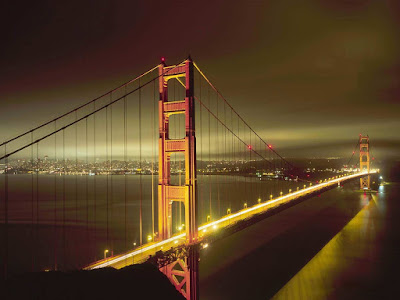 The Golden Gate Bridge San Francisco in the Night Pictures The Golden Gate Bridge San Francisco in the Night Pictures The Golden Gate Bridge San Francisco at Night Pics The Golden Gate Bridge San Francisco at Night Pics The Golden Gate Bridge San Francisco Night Photo The Golden Gate Bridge San Francisco Night Photo The Golden Gate Bridge San Francisco The Golden Gate Bridge San Francisco The Golden Gate Bridge San Francisco in the Night Pictures and Photos The Golden Gate Bridge San Francisco in the Night Pictures and PhotosThe Golden Gate Bridge San Francisco Information : The Golden Gate Bridge links San Francisco with Marin County in absolute splendor. The bridge is one of the architectural marvels of the Twentieth Century and a testament to human strife, as it was constructed during the years of the Great Depression. For years, the Golden Gate Bridge held the title as the longest suspension bridge in the world. Before its completion in 1937, the bridge was considered impossible to build, due to persistently foggy weather, 60-mile-per-hour winds, and strong ocean currents, which whipped through a deep canyon below. In fact, the bridge is commonly known as the "Bridge that couldn't be built." Despite these unforgiving natural elements, the bridge was constructed in a little more than four years. The total cost was $35 million. The total length of the bridge spans 1.2 miles. Eleven men lost their lives during the construction of the bridge. Even today, the massive spans of the bridge are often shrouded in fog. The bridge sways 27 feet to withstand winds of up to 100 miles per hour. International Orange was the color chosen for the bridge because it blended well with the bridge's natural surroundings. The two great cables extending from the bridge contain 80,000 miles of steel wire, which is enough to circle the equator three times. The concrete poured to cement the bridge into the stormy waters below could have also been used to pave a five-foot sidewalk from New York to San Francisco. Because of the Golden Gate Bridge, San Francisco is one of the premier skyline cities in the nation. It was a triumphant day in the history of the city when the bridge was completed on May 27, 1937. Over 200,000 people celebrated the grand opening of the Golden Gate Bridge by walking its length. The following day, a dedication ceremony was held to officially christen what would become the architectural trademark of the city. The regular flow of vehicular traffic began the next day. Efforts to begin the construction on the bridge began as early as 1928. The process would entail the efforts of six counties in Northern California. In 1928, the counties formed a Golden Gate Bridge and Highway District. In 1930, the voters appropriated a $35 million bond issue to finance the building of the bridge. For many years following, Joseph Baerman Strauss, a distinguished engineer, dreamed of raising a span across the Golden Gate. It was in response to his vision that people first started saying that the bridge could not be built. But, amazingly enough, Strauss held fast to his vision, and a span was eventually raised across the Golden Gate Bridge. The actual work on the bridge began on January 5, 1933. It was completed four-and-one-half years later. The result astounded the fiercest of Strauss's critics. To this day, the bridge is admired for its magnitude and beauty. The bridge is nothing short of a powerful force meant to combat nature. The often mighty winds from the Pacific Ocean are sustained by a mid span swing of 27 feet. The two towers of the bridge rise an impressive 746 feet, which is 191 feet taller than the Washington Monument. The pier of the bridge is only 1,215 feet from the shore, the distance between the two towers that support the cables, which in turn, support the floor of the bridge is 4,200 feet. These two cables are the largest bridge cables ever made at a little over 3.61 feet in diameter. Today, pedestrians and bicyclists are still allowed to cross the bridge on pathways with breathtaking views of the city, Alcatraz, and the Marin Headlands. The bridge toll for vehicles is $5 when entering San Francisco. The first exit of the Marin side of the bridge is Visa Point, which provides a magnificent view of the San Francisco skyline. But, the best way to view the bridge is to walk across. This usually takes about an hour. |
| Angel Falls In Venezuela Pictures and info - Water Falls South America Posted: 22 Jan 2010 01:42 PM PST Water Falls - Angel Falls In Venezuela South America Pictures : Facts and Information Angel Falls in The Seven Forgotten Natural Wonders of the World : The Story of the Angel Falls Discovery : The Natives in Venezuela had known about the "Salto Angel" since the beginning of time. Then United States pilot Jimmie Angel was flying over the area in 1935 when he landed on the top of a lone mountain in search of gold. His plane got stuck in the boggy jungle on top of the mountain and he noticed a pretty impressive waterfall plunging thousands of feet down. He wasn't too happy about the 11 mile hike back to civilization, and his plane remained stuck and rusting upon the mountain as a monument to his discovery. Soon the whole world would know about the falls, which came to be known as Angel Falls, after the pilot who "discovered" them. Angel Falls plunges from the top of a mesa, or what the natives call a Tepuyi. Named "Auyantepui", the Angel Falls mesa is one of over a hundred of its kind which are scattered about the Guiana Highlands of southeast Venezuela. Like so many slumbering giants, what characterizes these mesas (Tepuys) is their massive heights soaring up towards the sky, each with a flat top and totally vertical sides (check out the picture at left). Also called "table mountains" (which accurately describes their shapes) these Tepuys were formed out of sandstone billions of years ago. Their vertical sides are continually being eroded by the action of water from the heavy rainfall the Guiana Highlands gets. Courtesy By extremescience.com  Angel Falls Water Falls Picture Angel Falls Water Falls Picture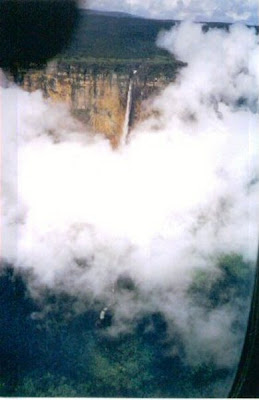 Angel Falls Water Fall Picture Angel Falls Water Fall Picture Angel Falls venezuela Picture Angel Falls venezuela Picture Angel Falls Water Fall Picture Angel Falls Water Fall PictureAngel Falls. Buy this poster at AllPosters.com "Where is the highest waterfall in the World?" Hidden in a wilderness region, called the Gran Sabana, in Venezuela. They tumble 1000 meters off the edge of an escarpment of the mysterious Auyan Tepuy, a sandstone mesa of 700 sq kms. The Angel Falls were discovered by accident in 1935 by Jimmy Angel (1899-1956), an American adventurer and bush pilot who operated in Central and South America. > Discovery: Last summer I made an excursion to view the Falls and learned of the exciting history of their discovery. Jimmy Angel owned a Fokker monoplane of 1930's vintage, capable of carrying 3 passengers and freight. He became a legendary figure in Venezuela, in his quest for gold and daredevil flying. While flying up the Devil's Canyon sector of Auyan Tepuy he spotted amongst the clouds an impressive waterfall that hurtled into space to spray the jungle below. In 1937 he tried to land his plane on top of the flat-topped mountain close to the Falls, but ended up in a bog. He and his passengers had to abandon the plane and proceed on foot. A near vertical kilometer of cliff was descended to reach the jungle below. After 11 days of bushwhacking they reached an Indian village on a river that lead to civilization. Fokker Monoplane Jimmy Angel's Fokker Monoplane Jimmy Angel's Fokker Monoplane Jimmy Angel's plane, "El Rio Caroni", remained on the summit until 1970, when it was airlifted out and put on display at Cuidad Bolivar airport. It is in an excellent state of preservation, looking more robust than the little Cessna I flew in to Canaima. Near midnight I booked into the Hotel Italia on the waterfront of the Orinoco River at Cuidad Bolivar, after a long, air-conditioned bus ride from Caracas. Carlos, the manager, greeted me. "Want to join a tour group to see the Angel Falls?" he asks, "Come and see me in the morning." That's service for you! > The Tour: The tourist entry point is the isolated village of Canaima located at a beautiful spot on the Rio Carrao where a series of cataracts plunge into an extensive lagoon. This is Canaima National Park of 3 million hectares and there is no road access. The airstrip perimeter is a clutter of light planes of amazing variety. Twice a day a jet from Caracas disgorges tourists who are shuttled off to up market, air-conditioned accommodation. spacer Canoe on the Rio Churan Canoe on the Rio Churan My tour group consisted of 6 Europeans, German speaking, and a Venezuelan guide who spoke English. We boarded a motorized dugout canoe and sped across the lagoon in front of the cataracts. On the far side we hiked above Salto El Sapo, where another canoe laden with provisions was waiting to take us into the jungle. Canoe access to the Angel Falls is restricted to the rainy season, June to November. Thanks to El Niño, the rains had continued and the river was negotiable at the end of November, but only just. Alternatively, weather permitting and with absence of cloud, you can fly by the Falls, but blink and you've missed them. The Rio Carrao is up to 200 meters wide and leads straight to Auyan Tepuy. We donned lifejackets and huddled under canvas drapes to shelter from the spray as we roared up several scary rapids. Towards dusk we pulled into the bank at Camp Orquidea - a jungle camp beneath towering rocky bluffs. The shelter was open-sided with a thatch roof. Sandstone floor paving stones show ancient ripple marks. Other tour groups used the camp. About 50 hammocks complete with mosquito nets awaited our tired bodies. Soon the kitchen was a hive of activity and we enjoyed spaghetti bolognaise by candle light, joined by a group of 20 Italians who raged into the night. Next morning our canoe headed up the tributary Rio Churan to take us deep within the mountains. Rapids were more frequent and frightening. Huge sandstone blocks stud the river bed. Finally we reached Rat Island opposite Devil's Canyon and our first glimpse of Angel Falls, an awesome plume falling from the clouds that shroud the mountain tops. Our guide explained that an hour's hike up through the jungle will bring us to the Mirador, a rocky outcrop from where we would see the Falls in their entirety. Up, and jungle, are the operative words - a tangle of lianas, fallen branches, mossy rocks and mosquitoes made progress miserable but it was worth the struggle. The cloud cleared from the tops. A river took off into space high above. What a sight! A tremendous amphitheatre at the base of the Falls was a swirling mass of spray. A DC3 tourist aircraft flew by, in and out of the cloud - Wow, I thought, I'm glad to be on tierra firma and not dodging mountains! We clambered down the rocks to the stream and bathed in the first substantial pool below the Falls. The cool mountain waters cleansed us of sweat and grime and left us invigorated for the hike back and a welcome lunch at the boat landing. The return journey next day by canoe down the Rio Carrao was a delight. Above the rapids, we were put ashore to hike for a few kilometers while the boteros took the boat down unladen for the water level had dropped considerably. The afternoon flight to Cuidad Bolivar by Cessna taxi gave us a bird's eye view of neighbouring mesas poking up from the jungle. Carlos, at the Hotel Italia, welcomed me back. "You must join tomorrow's tour of the Gran Sabana by minibus." he implores. What a salesman!  Angel Falls South America Angel Falls South America South America Water Falls Picture South America Water Falls Picture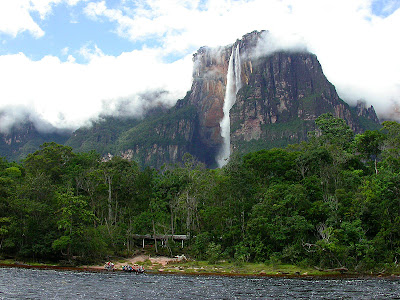 venezuela Water Falls Picture venezuela Water Falls Picture  > See the Beautiful Water Falls and Enjoy. Full Day Tour at angel-falls.com , On your flight to Canaima you will fly by Angel Falls, the highest waterfall in the world (3300 ft). After flying by the falls you will land at Canaima where you will find the famous waterfalls of the Canaima lagoon. From here you will cross the lagoon on a "curiara" (Indian dugout canoe) which will take you to a hiking trail where you will begin an easy hike to a waterfall called El Sapo, here you will find yourself following the trail that takes you directly behind the curtain of water of this incredible waterfall (be ready to get wet!!). After the excursion you will be offered a typical barbecue lunch (with a view of the Canaima lagoon). > Angel Falls, Canaima National Park Ultimate Tour More Details at angel-ecotours.com > A day tour to Angel Falls For More Details venezuelatuya.com |
| The Bay of Fundy Pictures and Photos Posted: 22 Jan 2010 01:33 PM PST  The Bay of Fundy Photo The Bay of Fundy Photo The Bay of Fundy Picture The Bay of Fundy Picture The Bay of Fundy The Bay of FundyThe bay was also named Baie Française (French Bay) by explorer/cartographer Samuel de Champlain during a 1604 expedition led by Pierre Dugua, Sieur de Monts which resulted in a failed settlement attempt on St. Croix Island. Portions of the Bay of Fundy, Shepody Bay and Minas Basin, form one of six Canadian sites in the Western Hemisphere Shorebird Reserve Network, and is classified as a Hemespheric site.[3] It is owned by the provinces of New Brunswick and Nova Scotia, and the Canadian Wildlife Service, and is managed in conjunction with Ducks Unlimited Canada and the Nature Conservancy of Canada. Read More at wikipedia |
| Anaconda Amazing Hunting Pics and Photos Posted: 22 Jan 2010 05:36 AM PST |
| Amazing - Birds Stealing Ice Cream - Funny Birds Photos Posted: 22 Jan 2010 05:06 AM PST |
| Lake Baikal In Russia Pictures, Photos, Tourist Map Posted: 22 Jan 2010 04:46 AM PST The Seven Underwater Wonders of the World : Russia says "Sacred lake" is 25 million years old-the oldest lake on the planet. 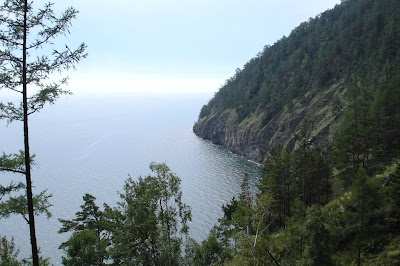 Lake Baikal in Russia Picture Lake Baikal in Russia Picture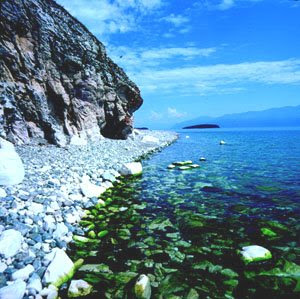 Lake Baikal in Russia Photo Lake Baikal in Russia Photo Beautiful Lake Baikal Picture Beautiful Lake Baikal Picture Lake Baikal in Russia Photo Lake Baikal in Russia PhotoIn early March, snow still blankets lake Baikal, its deep waters sealed beneath three-foot-thick ice. Over the next two months, under bright springtime sun, the ice will slowly thaw in a process punctuated by cracking sounds not unlike the sharp report of guns. As long as the ice remains in place, though, scientists can set up camp right in middle of this 400-mile-long, 5,000-foot-deep lake. Russia says "Sacred lake" is 25 million years old-the oldest lake on the planet. It is also the deepest lake, holding more water than all of North America's Great Lakes combined. It's aquatic life comprises more than 1,500 animal species and 1,000 plant species, two-thirds of which are endemic. According to marine scientist Andy Rechnitzer, Baikal is more biologically diverse than other lakes because oxygen-rich water circulates from its surface to its deepest depths, a process likely related to geothermal vents. One of the most interesting animals in the lake is the Baikal seal, or nurpa, the world's only fresh water seal. Nurpas use their sharp claws to carve dens for their families while ice is still forming. Finding their dens is relatively easy: look for air bubbles trapped in the ice after being exhaled by nurpas. You can also look for small breathing holes poked into snowdrifts by the seals. For a diver to get into a den is another story. First, a diving crew member must use a small metal saw to cut a small hole in the ice. Then a circular, manhole-size opening is cut with a chain saw, and long poles are used to push the round slab under the ice. To keep the hole from freezing over, it must be constantly raked. A team effort, indeed. Under the ice, the water is warmer than the air [36 degrees F], but it is still very cold for scuba diving. Every 30 seconds or so, divers must tug on safety lines attached to their wrists to let the crew above know that they are all right. Seen from an underwater perspective, the seal's den is an intricate ice carving, complete with tunnels and an igloo-like canopy that functions as an air pocket. Nurpas are shy, and pups resting on a bunk bed of ice quickly dive into the water when startled by a visitor. In June, conditions at Lake Baikal are much different. Although the water temperature is about the same as it is in spring, the air temperature is usually in the 60s. Visibility underwater is perhaps 200 feet, many times greater than that in most lakes. The "Great vis" at that time of year is caused by the water's relative lack of minerals and by countless small crustaceans eating the algae, plankton, and bacteria that can cloud fresh water and salt water alike. Clarity does not last long, however. By mid July, an algae bloom produces pea-soup conditions. Except for the numbing cold that pains their ears, face, and fingers within minutes of entering the water, divers exploring the shallows of Baikal might feel as if they are hovering over a meadow on a sunny day. Looking up from a depth of 50 feet, they can see clouds in the sky. Looking down, they sea fields of fluffy green algae. The greens spires of three-foot-tall candelabra sponges poke through the algae. Such large sponges, which get their color from algae living symbiotically in their tissues, are not rare in saltwater, but in other freshwater lakes they have no parallel. The sponges are homes for amphipods, alien-looking shrimplike creatures that are as small as specks or as large as human thumbs. And the waters of Lake Baikal hold 240 species of them. Hiding among the sponges and algae are sculpins, bottom-dwelling fish that are masters of camouflage, their patterned bodies blending in with their surroundings. These ancient fish, like most cold-water species, don't move fast; it's just too cold here to make quick moves. So, the lake's 40 species of sculpins, comprising 80 percent of Baikal's fish biomass, rely on camouflage for protection against larger fish. Pear Near the lakes northern and, at a depth of approximately 1,350 feet, a geothermal vent provides warmth for the community of sponges, snails, worms, and fish living in the pitch-dark environment. The existence of this vent confirms that Baikal is a place where continental masses are being pulled apart. Photographer Emory Kristof, who has visited the site for the National Geographic Society, explains: "The communities of life resemble organisms normally found in an ocean, which gives weight to the theory that Baikal is an ocean in the making." One rarely seen creature is the omul, a delicious fish endemic to the lake. Its scarcity indicates Baikal is ecologically out of balance, a result of the destructive effects of industrial development and logging nearby. Vadim Fialkov, of the lake Baikal Limnological Institute, reports that "local environmental groups have put pressure on the government to reduce the amount of effluents that are dumped into the lake. With some luck, we'll get Baikal back to its pristine state and keep it that way. "To help the effort, UNESCO has recommended that the lake and its watershed be designated a World Heritage Site." Courtesy By : Wonderclub.com Lake Baikal In Russia Tourist Map :  Baikal Amur Railway Baikal Amur RailwayMap of Lake Baikal courtsey: baikaler.com 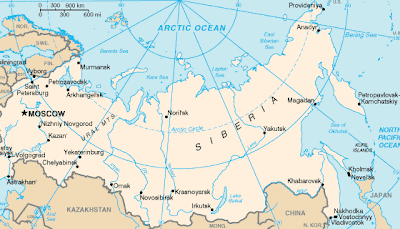 Map of Lake Baikal - World's Largest Freshwater Lakeby volume- Image by CIA Map of Lake Baikal - World's Largest Freshwater Lakeby volume- Image by CIA  Lake Baikal Ring Lake Baikal RingOften called the Pearl of Siberia, Lake Baikal is a natural wonder that almost defies description. Its 1600 meter (almost 1 mile) depth holds 20% of all the freshwater (melted condition) on the planet. It is fed by 336 rivers and streams that flow from the surrounding mountains and all parts of Siberia and it is estimated that it took over 400 years for these rivers and streams to fill the lake up originally. It is considered the oldest lake in the world. |
| The Panama Canal History Photos Posted: 22 Jan 2010 04:15 AM PST The Seven Wonders of the Modern World : The Panama Canal History and Photos -  The Panama Canal Photos The Panama Canal Photos The Panama Canal Photo The Panama Canal Photo The Panama Canal Photos The Panama Canal Photos> The Panama Canal History History: Among the great peaceful endeavors of mankind that have contributed significantly to progress in the world, the construction of the Canal stands as an awe-inspiring achievement. The unparalled engineering triumph was made possible by an international work force under the leadership of American visionaries, who made the centuries-old dream of uniting the two great oceans a reality. In 1534, Charles I of Spain ordered the first survey of a proposed canal route through the Isthmus of Panama. More than three centuries passed before the first construction was started. The French labored 20 years, beginning in 1880, but disease and financial problems defeated them. In 1903, Panama and the United States signed a treaty by which the United States undertook to construct an inter-oceanic ship canal across the Isthmus of Panama. The following year, the United States purchased from the French Canal Company its rights and properties for $40 million and began construction. The monumental project was completed in ten years at a cost of about $387 million. Since 1903 the United States has invested about $3 billion in the Canal enterprise, approximately two-thirds of which has been recovered. The building of the Panama Canal involved three main problems -- engineering, sanitation, and organization. Its successful completion was due principally to the engineering and administrative skills of such men as John F. Stevens and Col. George W. Goethals, and to the solution of extensive health problems by Col. William C. Gorgas. The engineering problems involved digging through the Continental Divide; constructing the largest earth dam ever built up to that time; designing and building the most massive canal locks ever envisioned; constructing the largest gates ever swung; and solving environmental problems of enormous proportions. Now, more than 80 years after the first official ocean-to- ocean transit of the waterway, the United States and Panama have embarked on a partnership for the management, operation and defense of the Panama Canal. Under two new treaties signed in a ceremony at OAS headquarters in Washington, D.C., on September 7, 1977, the Canal will be operated until the turn of the century under arrangements designed to strengthen the bonds of friendship and cooperation between the two countries. The treaties were approved by Panama in a plebiscite on October 23, 1977, and the U.S. Senate gave its advice and consent to their ratificaton in March and April 1978. The new treaties went into effect October 1, 1979. > The Commission The Panama Canal Commission, a U.S. government agency, will operate the Canal during the 20-year transition period that began with Panama Canal Treaty implementation on October 1, 1979. The Commission is supervised by a nine-member binational board. For the first 10 years, a U.S. citizen served as Chief Executive Officer, under the title of Administrator, and a Panamanian was the Deputy. Effective January 1, 1990, as mandated by the treaty, a Panamanian serves as Administrator and a U.S. citizen is the Deputy. The Commission replaced the former Panama Canal Company, which, together with the Canal Zone and its government, was disestablished on October 1, 1979. On December 31, 1999, as required by treaty, the United States will transfer the Canal to Panama. The Commission remains committed to serving world trade with the standards of excellence that have been the tradition of the waterway throughout its history. With prudent investment in maintenance, modernization and training programs, the Canal will remain a viable, economic transportation artery for world trade well into the future. Courtesy By Wonderclub |
| You are subscribed to email updates from Animals Zoo Park To stop receiving these emails, you may unsubscribe now. | Email delivery powered by Google |
| Google Inc., 20 West Kinzie, Chicago IL USA 60610 | |


























No comments:
Post a Comment
Note: Only a member of this blog may post a comment.